Effects of Aeration Tillage on Hay Yield and Soil Compaction
A Demonstration
By Rico Balzano
In t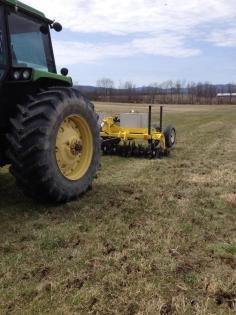 he Champlain Valley of Vermont, Vergennes and Covington clay soils used for grass hay production are subject to soil compaction over time as equipment travels over the crop for multiple passes for maintenance and harvest operations. The Champlain Valley Crop, Soil, and Pasture Team received a Northeast SARE grant to investigate the potential benefits of regular and consistent aerator use on permanent hay fields to help alleviate compaction and maintain consistent yields over time.
he Champlain Valley of Vermont, Vergennes and Covington clay soils used for grass hay production are subject to soil compaction over time as equipment travels over the crop for multiple passes for maintenance and harvest operations. The Champlain Valley Crop, Soil, and Pasture Team received a Northeast SARE grant to investigate the potential benefits of regular and consistent aerator use on permanent hay fields to help alleviate compaction and maintain consistent yields over time.
Treatments
Three field sites were selected in Bridport and Addison to impose repeated aeration tillage treatments using a Gen-Till aerator, a single-axle Aerway, or a tandem-axle (T-axel) Aerway aerator tillage implement on hay fields. Data was collected in 2014, 2015 and for the first cut of 2016 at the Addison site; and 2014 and for the first cut of 2015 at the Bridport site. Treatments at the Addison site were no aeration, aerated one year (2014), and aerated two years (2014 and 2015). The 2015 growing season was unusually wet in June with over 8.5” of rain.
Hay Yield
The aeration appears to have positively affected yield in 2016 for aeration in 2014, but negatively affected yield in 2016 for aeration in both 2014 and 2015. The second year of aeration soil was saturated during the growing season. Aeration treatments had greater yield than the control in 2014 for all three cuts, but similar or lesser yield than the control in 2015 for both cuts. It is well known that clay soil is susceptible to compaction under saturated conditions, and these results are likely reflecting those conditions.
Compaction
Soil samples were collected from each treatment block in November 2015 and sent to Cornell Soil Health Test lab for analysis. Soil compaction in the treatment areas was measured using a manual soil penetrometer to record the maximum pressure (psi) required to penetrate the soil from 0 to 6 inch depth and 6 to 18 inch depth as part of the Cornell Soil Health Test field procedures.
Surprisingly, average surface compaction measurements were not significantly different as a result of the aeration treatments. Subsurface compaction showed a slight increase under aeration, though aeration tillage is not expected to change soil compaction at that depth.
Precision Agriculture
The farmer at the Addison site, Doug Gould, used the FM-750 GPS steering guidance unit that we provided to track aeration tillage activities in the field. As a result, he has purchased his own GPS guidance system to use while aerating or during fertilizer application to improve field efficiency of machinery operations.
Conclusions
The soil conditions during the time of aeration will likely have an impact on compaction and yield. If the soil is wet at the time of treatment, aeration may be less effective and even counter productive. If the soil is dry at the time of aeration, aeration may benefit compaction and yield.
Graphics
(click on a graphic to see it enlarged)
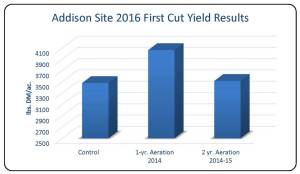
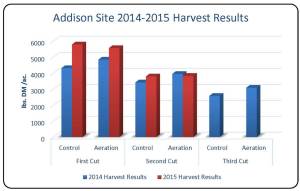
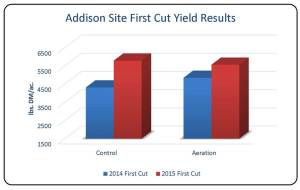

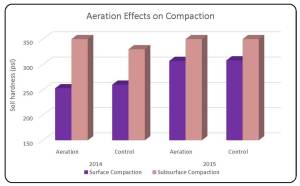

Questions about aeration tillage can be directed to Rico [802-388-4969 ext. 338 or rico.balzano@uvm.edu]
Work for this project was funded by:
